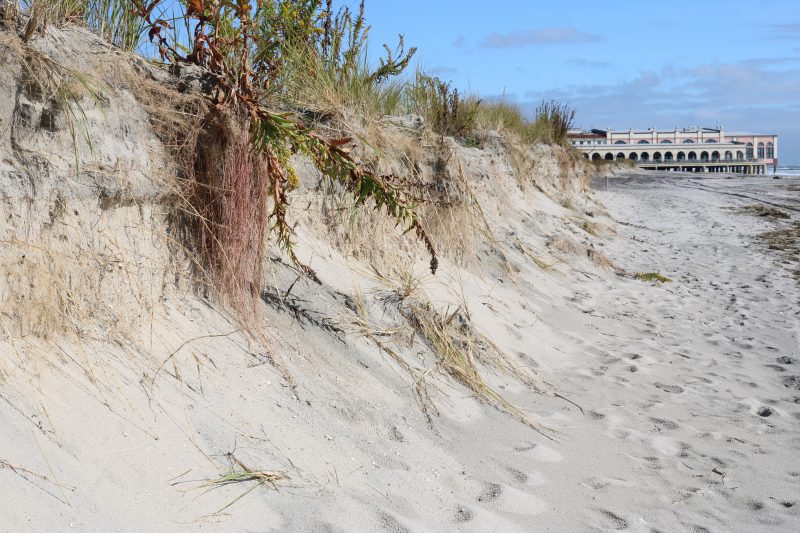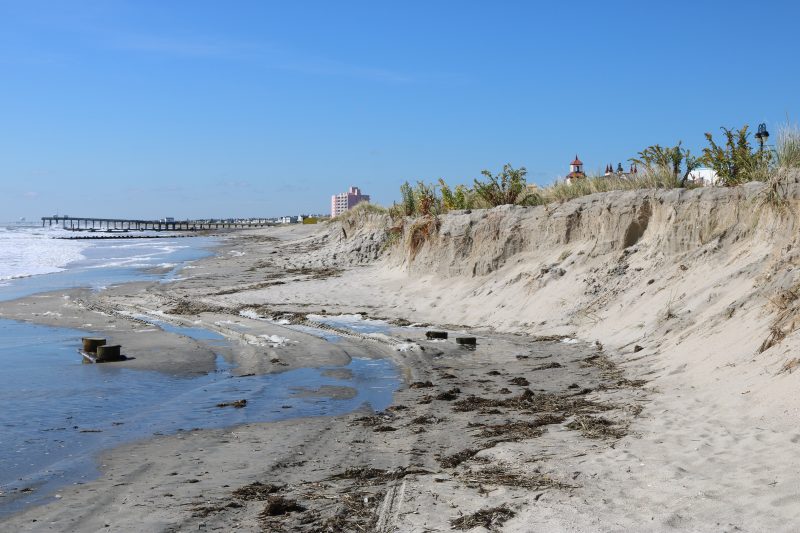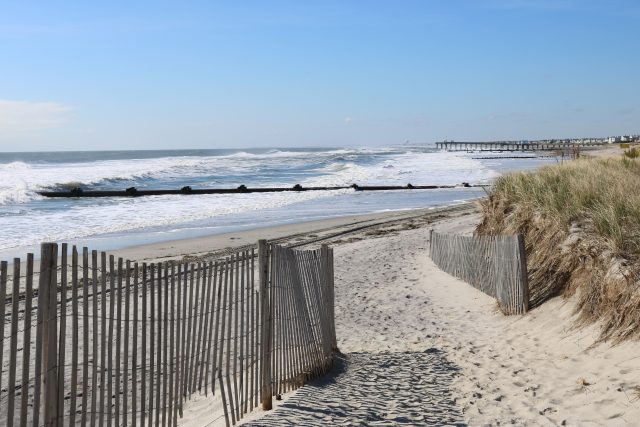By DONALD WITTKOWSKI
Ocean City is expected to introduce a funding ordinance Thursday to pay for its share of a beach replenishment project that may include extra sand to help restore the shoreline following a coastal storm that pounded the resort with unusually high tides.
City spokesman Doug Bergen said beaches along the entire length of the barrier island experienced erosion from the storm, which lingered about 200 miles offshore from Oct. 9 to the morning of Oct. 12. More than three days of destructive high tides and strong winds combined to damage the beaches and dunes in towns along the Jersey Shore.
“Beaches across the length of Ocean City eroded in the gale earlier this month – as they do in all sustained coastal storm events,” Bergen said in an email. “The beaches in the blocks around Fifth Street are typically most vulnerable to erosion. The ocean breached the dune there.
“The rock groin at 59th Street, which had been completely buried by the most recent replenishment project, is now fully exposed. Those two areas saw the most severe damage,” he continued.
Coming at just the right time, Ocean City, Sea Isle City and Strathmere are part of a new U.S. Army Corps of Engineers beach replenishment project that will deposit a total of 2.4 million cubic yards of fresh sand along the eroded shoreline of all three towns starting this fall.
A $32.5 million contract been awarded for the project. However, there are options built into the contract that could push the cost up to $41.3 million if surveys of the storm-damaged beaches show that even more sand is needed for replenishment.
The Army Corp of Engineers and the New Jersey Department of Environmental Protection will pay for most of the cost, but Ocean City, Sea Isle and Strathmere will also kick in a portion.
Bergen said Ocean City’s share is expected to be around $1.6 million. However, the bond ordinance scheduled to be introduced Thursday by City Council will include $2 million in funding to make sure the city is covered if there is a cost increase with the beach replenishment project.
“(Ocean City) Finance Director Frank Donato has been in touch with the state Department of Environmental Protection on cost estimates. Based on the recent storm, he will include money for extra beach (sand) and for an extra stockpile of sand to rebuild dunes,” Bergen said.

According to initial figures, Ocean City will receive 800,000 cubic yards of new sand to replenish the beaches in the north end of town from Seaview Road to 13th Street. Another 455,000 cubic yards of sand will help restore the beaches in the southern end from 49th to 59th streets.
The project is scheduled to get underway this fall and be completed in time for the 2020 summer tourism season.
A spokesman for the Army Corps of Engineers said that even more sand may be added to the replenishment project once an analysis is done of the beaches and dunes in Ocean City, Sea Isle and Strathmere.
Great Lakes Dredge & Dock Company, of Oak Brook, Ill., the contractor for the replenishment project, will conduct “pre-placement surveys” of the beaches prior to beginning the work to determine if the Army Corps of Engineers should consider the option for more sand.
“We analyze that data that comes back from that (survey) and if it calls for additional sand, which certainly wouldn’t be surprising in this case, that’s where the options for the contract come in,” said Ed Voigt, a spokesman for the Army Corps of Engineers.
Options built into the contract could increase the cost of the beach replenishment project to $41.3 million, depending on the findings by Great Lakes. The hope is that there will be enough funding to pay for all of the sand that is needed to restore the beaches in all three towns.
“If the funds are more than enough to cover the additional sand that is needed, then we pump all of the sand,” Voigt said. “If we can only do some of it, then we’ll use the options to assess what’s available and do the best we can.”
Until those surveys are completed, it is impossible for the Army Corps of Engineers to say unequivocally whether the amount of sand will be increased, Voigt explained.
“We can’t predict right now,” he said. “The options will certainly help. That’s all I can say. We won’t know until we get those pre-placement surveys and then go from there.”







